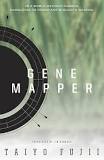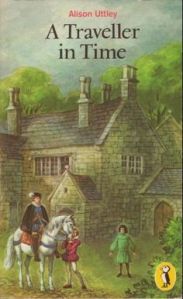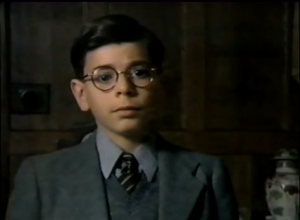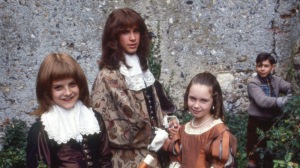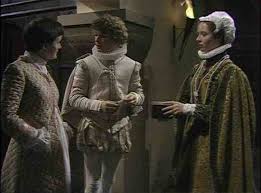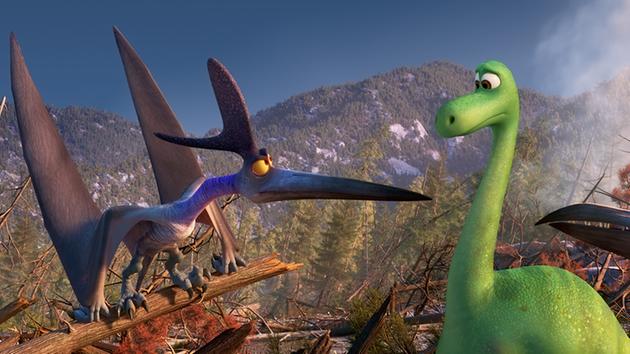 At the heart of Adam Scovell’s Mothlight (2019) lies a mystery. Why did Phyllis Ewans hate Billie, her sister, so very much? To the extent that when the elderly Billie scalds herself with a hot drink, Phyllis ignores the fact until Thomas’s grandmother discovers the situation and has Billie admitted to hospital. Thomas’s grandmother is already caring for Billie, despite Phyllis sharing a house with Billie, and at this point Phyllis effectively turns over all responsibility for her care to Thomas’s grandparents. When Billie dies, it is they who arrange her funeral and deal with the legalities. Meanwhile, Phyllis has gone about her business as usual, even as far as going on holiday, apparently determined to forget as soon as possible that her sister ever existed. That any photographs of Billie still exist is because Thomas’s grandmother, realising what Phyllis Ewans would do, rescued them, to ensure she was not forgotten.
At the heart of Adam Scovell’s Mothlight (2019) lies a mystery. Why did Phyllis Ewans hate Billie, her sister, so very much? To the extent that when the elderly Billie scalds herself with a hot drink, Phyllis ignores the fact until Thomas’s grandmother discovers the situation and has Billie admitted to hospital. Thomas’s grandmother is already caring for Billie, despite Phyllis sharing a house with Billie, and at this point Phyllis effectively turns over all responsibility for her care to Thomas’s grandparents. When Billie dies, it is they who arrange her funeral and deal with the legalities. Meanwhile, Phyllis has gone about her business as usual, even as far as going on holiday, apparently determined to forget as soon as possible that her sister ever existed. That any photographs of Billie still exist is because Thomas’s grandmother, realising what Phyllis Ewans would do, rescued them, to ensure she was not forgotten.
As mysteries go, the solution will prove in some ways to be comparatively banal, although underlying it is a matter of profound importance to Phyllis , and to another person. Yet Thomas, the narrator of the story, will apparently be unable to comprehend the nature of the mystery or its solution, refusing to see what is apparently staring him in the face. Perhaps it is simply because he is so completely out of kilter with the world around him, though why that might be is unclear. We could maybe start with his having been “a shy and inward-looking boy” (11), at least according to his grandmother. Why he spent so much time with his grandparents is not explained, but there is already a sense of something lurking unacknowledged in his early childhood.
His parents seem to be entirely absent, and his grandparents have taken on some sort of parental role. They are also the facilitators of his first meetings with the Ewans sisters even as they later forbid him to keep in touch with Phyllis Ewans. Their own connection with the Ewans sisters seems to be purely business—Thomas’s grandfather runs a grocery business and they are customers, albeit customers who rarely pay their bills. With hindsight we may wonder why it was that Thomas’s grandparents tolerated this running debt, but it is not a question that Thomas ever asks himself.
As he grows older, Thomas will describe himself thus:
I became a lonely teenager, interested only in things that could excuse such loneliness. These were namely an insistence on long walks in Wales at the weekend and an increasing interest in moths.
Scovell, Mothlight, 28
Whether the loneliness begat the walking and the pursuit of moths, or whether the walking and the pursuit of moths begat the loneliness is unclear, not least because Thomas himself seems uncertain, but as the novel unfolds it becomes more and more difficult to imagine that Thomas ever had an existence that was separate from either Billie or Phyllis Ewans so closely is his life entwined with theirs. Indeed it is almost as though they somehow brought him into existence. When, after Phyllis’s death he painstakingly begins his examination of her possessions, one has the sense that Thomas is as much hunting for himself as for the explanation of Phyllis’s animus towards Billie, and the deeper secret that Phyllis herself hides. And it’s difficult not to conclude that, for all he has been obsessed for years with Miss Ewans, he has come to stand in relationship to Phyllis much as she once stood in relation to Billie, and that she is as much a necessary part of his life as she is an annoyance.
By his own admission, Thomas begins to haunt Phyllis’s life, infected as he is by “the parasite of her interests” (37), and yet he seeks to suggest too that his early interest is superficial, something he has picked up “in the way that many do when young and impressionable, and so I took to the most obvious ways to express this interest by fumbling around in an amateurish manner, and with little success ” (39). But the opening words of the novel undermine all of this:
To my knowledge, Phyllis Ewans had only two great preoccupations in her long life: walking and moths. An interest in these same two subjects also grew within me after a number of years of knowing her; such was the power of her influence.
Scovell, Mothlight, 10
So which is it to be? Has Phyllis exercised a magnetic influence over Thomas since almost the moment they first met (although, by his own admission, Phyllis first takes an interest in him because Billie has already taken an interest in him), or has Thomas, for whatever perverse reason, modelled himself on Phyllis Ewans, and taken on her interests and, perhaps also, her life? There is undeniably something strange about the interest that both women take in him, and indeed about their relationship with one another. Billie is described as being “much older than her sister” (11) and Thomas will later say “they were only sisters in name, and I still harbour daydreams surrounding the likelihood of their differing parentage” (11). One begins to wonder if in fact Billie is Phyllis’s mother rather than her sister. And, eventually, one can’t help wondering if Thomas has come to imagine he is Phyllis’s son.
Meanwhile, Thomas’s narrative proceeds in fits and starts, as though he cannot even find the right place to begin the story. He constantly backtracks in his attempt to tell the story, pulled between the past, present and future, apparently unable to locate himself in his own narrative. Or perhaps, more accurately and more appropriately, he is circling the story, like a moth drawn to a flame, only to find himself caught in a death spiral, unable to resist his attraction to the light but unable to explain it either. At one point, just after Billie’s funeral, Thomas talks of “following blindly towards the light if only to uncover the reason for [Phyllis’s] character. This was the curiosity she had imbued in me with parasitic precision” (28). Which is to imply yet again that Phyllis Ewans herself is responsible for causing Thomas to stalk her as obsessively as he does—and let us not mince words; he stalks her—when it is his own fascination that drives him, a fascination that his grandparents do their best to counter: “I was not allowed to write or converse with her due to the great divide between her and my family”, this presumably referring to the quarrel when Phyllis left Thomas’s grandparents to take care of everything after Billie’s hospitalisation. But then, by Thomas’s own admission, he “could not have done so at any rate as there was no forwarding address for her new London home” (41).
All this in itself might be enough for a short novel: how Thomas accidentally rediscovers Phyllis Ewans in London, when he starts work in a university entomology department and hears her name mentioned. How they begin to meet regularly and talk, how Thomas begins to sense a deeper mystery, and how he insinuates himself into her life, becoming her de facto carer. Whether she actually requires this is not entirely clear, but as Thomas puts it: “She needed to be healthy for as long as conceivably possible in order to pass on her secrets to me” (68).
What does Phyllis Ewans get from this arrangement, apart from a devoted slave? According to Thomas, it’s stories. “This was an explicit requirement, as Miss Ewans seemed to draw energy from them, almost as nourishment” (68), and Thomas devotes much of his time to telling her stories of his experiences when out moth-hunting, or retelling them, altering them, embellishing them.
And it is at this point that the novel takes a strange turn. Or, rather, that something that has been happening already becomes more explicit. Thomas calls them “visions”; the first occurs at the graveside when Billie’s coffin is lowered into the grave. Thomas describes himself as being somehow attacked by “a skein of moths”(27), an image drawn from a photograph of Billie with, behind her, an ornament of some sort that looks precisely like “hordes of moths” (27). The fluttering of paper wings will dog Thomas as his mental health appears to deteriorate, but that is not all.
Another time, walking alone in Snowdonia, long before meeting Phyllis Ewans again, Thomas experiences a vision of a lake, and from a jetty a woman staring at him. “I had become aware of my own detachment from reality. I could feel the spray of water from the breeze and sometimes felt a hand holding mine” (42). Later, he finds a photograph taken by Phyllis Ewans, documenting precisely the scene he had encountered in a Welsh forest, and asks himself, “whose hand had held mine” (43). By his own admission these teenage experiences have an “accumulative, traumatic effect on my own psyche” (43). And later, as an adult, the hand returns. In one particularly disturbing scene, as Thomas tells Phyllis about a visit to a nature reserve, one they had both visited, though not at the same time.
I felt a hand grasp my own. It was, I just knew, the same hand that had held mine in the forest in North Wales: a woman’s hand, slender and friendly. […] More unnerving than the feeling of the hand in mine was the uncanny change it seemed to make to my own. I looked down to my side in my memory of walking around the serve and found my hand to be slender and feminine with longer, ill-kept fingernails.
Scovell, Mothlight, 70-71
These occurrences increase after Phyllis Ewans’ death, particularly when Thomas is sorting her photographs, many of which appear, uncannily, to document places that he has also visited, although more than once Phyllis Ewans has denied having ever visited them. Unsurprisingly, perhaps, Thomas chooses to interpret these synchronicities as Phyllis Ewans attempting to send him messages, and maybe he is correct insofar as Phyllis has chosen to retain these photographs for a reason, though not to communicate with him from beyond the grave.
All first-person narrators are unreliable to some extent, but Thomas regularly undermines his own recollections by repeating them with variations, particularly when it comes to his own creation story, rather in the same way as he has repeated stories to Phyllis. Yet, while his interpretation of the strange encounters might be suspect, there is a sincerity in the way he describes the encounters themselves that suggests that some of them at least are genuine, for values of genuine that presuppose a belief in the supernatural. It’s not entirely clear what Thomas believes but it is clear that he continues to find the experiences deeply unsettling. His mental breakdown after the death of Phyllis Ewans only makes matters worse while at the same time driving him to finally solve the central mystery of her life, following a breadcrumb trail of hidden photographs, entries in an address book, and a name: Elsa.
Indeed, the answer has, to some extent, been within Thomas’s grasp all along had he not been too naive to fully understand the meaning of that ghostly hand in his, and the associated “feeling of nervousness about this, [that] no one could be allowed to see us holding hands, whosoever she was […]. It was not simply down to the fact that our affection was a secret […] but that it was considered highly improper as well” (71). It comes as no surprise, in the end, to learn why it was that Phyllis returned so often to North Wales, or to find that Billie had discovered her secret and had acted upon that knowledge to the detriment of those involved.
For all that he claims at the end that he has always known, but can only accept if “the confirmation was spoken out loud” (150), one wonders what it is, at this stage, that Thomas does know. Or, perhaps, more accurately, what he is willing to accept. He seems convinced that Heather, Elsa’s daughter, can tell him for sure, but this is the one thing that she will not do, although she knows the story well enough, and has already confirmed Billie’s betrayal. This suggests that she suspects that Thomas wants her to tell him something else. Heather’s refusal to meet Thomas’s unspoken demand, in the very last sentence of the novel, is remarkably powerful; a moment of clarity after all of Thomas’s own evasions, underlying the fact of his having intruded into a story that is in fact not his to fully know.
And perhaps Thomas has also had the answer to the “hauntings”, if such they are, all along. As a teenager he realised that place is often emphasised in the visions, and later recalls Phyllis Ewans talking of “place being essentially the ghost of all our lives” (44).
I imagined her amused look, peering over my shoulder when the synchronous moments occurred, and found much likeness between her past and my past, albeit my past already had hers intertwined within it. Such dizzying thoughts would plague my mind as if we were, in fact, the same person: a reflection of simulacra displaced by some impossible mistake. All of this could simply have been down to our shared geographies and our shared passion for moths, but it went deeper than that.
Scovell, Mothlight, 44
All this would be enough in itself to make Mothlight a diverting read, if maybe a little mannered in its telling, as if Scovell is trying just slightly too hard for effect. Unsurprisingly, the inside of Thomas’s head is a rather exhausting, self-pitying and self-justifying place to be for long periods of time, not to mention having to spend much of the novel watching him fail to grasp what is so obvious to anyone reading it.
But this is not where the novel ends, and perhaps is not even where the novel begins. For this is a novel with photographs. In the acknowledgements at the end of this book, Adam Scovell tells us that Mothlight is constructed around a series of photos, which, apparently, he inherited from his grandmother and the “real ‘Phyllis’”, although the circumstances remain vague. It is therefore some kind of “found” piece, insofar as the photographs act as prompts of some sort and the novel is constructed around them. If we take the acknowledgements at face value, the co-opting of the photos into a story is assumed to have been permitted (and for all we know the story being told is indeed the story they told, or some version of it), but there is something disconcerting about the thought that these photographs could have as easily come from somewhere else, and that perhaps, one day the subjects of the photographs, or their descendants, might accidentally find themselves, pressed between pages, in a piece of fiction that is really nothing to do with them.
This is perhaps the risk a creator of “found” pieces runs, and maybe it adds a frisson to the act of creation, but something always feels vaguely wrong to me in these cases. As readers we become reluctant voyeurs, colluding in someone else’s act of appropriation. One might argue that this in fact sets the tone for the entire novel because it is in part a massive act of appropriation but equally, it can feel a little as though the author is producing this extra evidence as “proof” when it is nothing of the sort. Which is not to say that novels with photographs are inherently bad, but in this instance their inclusion feels jejune rather than illuminating. Although there is no denying that the first photograph of “Phyllis Ewans”, in which the female figure lurks in the background, hidden behind an English bulldog that sits front and centre, is remarkably striking. It is surely just a trick of the light that the sun glinting on her large round glasses make it look as though she has the eyes of an insect.
I think, though, that these photographs are not so much about co-opting unsuspecting people into the story as they are about signalling a connection with another text, W.G. Sebald’s The Rings of Saturn, a novel that is intensely present throughout this text, but perhaps never more so than when Sebald mentions Thomas Browne’s Musæum Clausum, and his inclusion of the bamboo walking canes in which two Persian friars smuggled silkworm eggs out of China, a section illustrated with a black and white photograph of a plate from a book of moths. By contrast, the only visual representation of a moth to be found in Mothlight is in Vince Haig’s beautiful collage cover design, where the moth’s wings are a patchwork assemblage of the photographs which lurk at the heart of this novel.
Sebald’s approach to writing Rings of Saturn is pretty much self-evident (and I do urge you to read his narrative; there was nothing else quite like it at the time, and since then, while many have attempted to emulate him, they have done so without really coming as close as they like to imagine). The text’s framework is a record of a walk he makes along the coast of East Anglia, in part as a celebration of recovering from illness, described at the beginning of the narrative. Each chapter spirals out from Sebald’s direct experience to a consideration of previous inhabitants of East Anglia (most notably Thomas Browne, writer of the incomparable “Urne Burial”, itself a meditation on the history of the area, and of past burial practices) and beyond, intertwined with the history of Sebald’s own family in Germany. Although it is at heart a narrative in search of a rootedness, it is noticeably a very outward-looking book, even if the narrative returns to home at the end of each chapter, “home” being wherever Sebald happens to find himself at that point but also a process of finding or relocating “home”. Importantly, it is also illustrated with a mixture of Sebald’s own photographs of his journey and appropriate material from photographic archives. Scovell’s approach is, we might say, Sebaldian, but it is also antithetically Sebaldian. While Sebald looks outward, recording his discoveries, Scovell’s narrator turns ever inward, somehow finding less and less to record.
Sebald’s photographs can be seen in terms of a very mundane act, documenting an account of a journey—sophisticated holiday snaps, but holiday snaps nonetheless; their interest lies as much as anything in the fact of Sebald having taken or curated them—but can the same be said of the photos taken or collected by Phyllis Ewans? What is it that Phyllis is actually documenting? We can choose to read them as documenting an innocent series of journeys through North Wales, or, covertly, documenting a love affair, if one knows how to read the signs, which Thomas clearly does not. But, talking about a particular series of photos Phyllis Ewans takes of Billie’s bedroom after Billie’s death, as if to underline her sister’s absence, Thomas notes that ‘Phyllis Ewans forced the ghost into the space, capturing it within an image of itself to control the existence of its memory” (31), and seems almost to be proposing that Phyllis uses the photograph to capture her subjects and memories, almost in the same way as she captures and mounts a moth.
There are many other influences in play, many of them folk horror-related, as one might expect of the person who devised the Folk Horror Chain. I was reminded of M.R. James’s neurasthenic academics, hastily scribbling down their accounts of dealings with the supernatural while awaiting the next act in their personal drama of revelatory horror drama: at the beginning of the novel Thomas alludes to being “plagued by my illness”. Phyllis Ewans’ alleged preoccupation with walking makes me think of Nan Shepherd, writer of The Living Mountain, and patron saint of so many modern walker-writers (though I am not aware she had any particular interest in moths). The novel’s dedication “For Nan” thus takes on a certain ambiguity—is he honouring his grandmother or someone else?
And there is more than a whiff of Great Expectations about this novel, the film as much as the book. Thomas’s initial meeting with Billie and Phyllis, a small boy’s encounter with two strange women, is memorably recounted.
Much of the furnishing was incredibly old and a thin mist of dust and debris was always visible. I’d never seen dust such as this before and quietly enjoyed disturbing it with my hand to create shapes and tiny whorls in the air. The walls were covered with mounted moths and, with hindsight, I imagine this dust to be an atmosphere of scales comprised of [sic] insect wings.
Scovell, Mothlight, 10
Billie certainly has a flavour of Miss Havisham about her, with Phyllis taking on the role of Estella. Billie ‘still had the air of a great and fashionable lady, brought over from her youth which was one filled with expensive fur coats, pearls, jewels and silken stockings’ (11), and everyone is surprised at her great interest in Thomas. The narrator describes how ‘Billie reached for a small purse tucked under numerous layers of clothing and blankets. Her spindly fingers, no doubt thought of as delicate and desirable some forty years previous, wrapped themselves around a rolled-up note. […] This bought my attention for some time on that visit, during which I all but ignored Phyllis Ewans’ (12). One cannot help but wonder whether Phyllis wasn’t also enacting a long and complex revenge for being overlooked, not least in the way she deliberately shows him a mounting of a poplar hawk moth, almost forcing it upon his attention.
As my grandfather went to leave, Phyllis Ewans decided to show me a specimen she had hanging in the furthest part of the hallway. Seeing an opportunity to discuss her favourite subject, she took the mounted insect off the wall and began to tell of its history with great gusto and character […] The moth had stood out from the others due to its great size and its solitary mounting. […] It seemed to my young eyes even then to possess some secretive important, some unique position ahead of all the other moths.
Scovell, Mothlight, 13
Clearly, for the adult narrator, this is an important moment in retrospect, but at the time? Later he will claim that Billie attempted to disrupt ‘my own burgeoning interest in walking and moths’ by showing him photographs, and perhaps with good reason if she associates moths with sexual transgression, but we are left with a powerful sense of two women bickering over the young Thomas’s future, and in effect crushing it before it has even begun, even as the mounting of the poplar hawk moth is later smashed: we are told this from the outset then spend much of the novel waiting for it to happen.
Then I began to wonder about the novel’s title, which I incidentally like very much. Was “mothlight ” Scovell’s own coinage, I wondered, or was it another of those words that Robert Macfarlane is seeking to reintroduce to our daily vocabulary? When I searched online, I found something unexpected. “Mothlight” is not original to Scovell but is in fact the title of a very short collage film made in 1963 by Stan Brakhage.
Unusually, Brakhage’s film was created without the aid of a camera; it involved pressing found objects between strips of splicing tape and then running them through a projector. Brakhage was inspired by seeing moths drawn to a candle flame. He identified powerfully with “these crazy moths […] flying into the candlelight, and burning themselves to death” and wanted to incorporate them into his artistic practice. He struggled to film live moths and eventually turned to dead ones instead:
Over the lightbulbs there’s all these dead moth wings, and I … hate that. Such a sadness; there must surely be something to do with that. I tenderly picked them out and start pasting them onto a strip of film, to try to … give them life again, to animate them again, to try to put them into some sort of life through the motion picture machine.
[YouTube]
Watching “Mothlight” online is an odd experience – an intense storm of detritus appears on the screen, some of it identifiable as insect body parts, the rest of it unrecognisable. There seems to be some debate about how it would have originally been experienced, but there is an idea that the whirr and clatter of the projector would evoke the idea of wings beating, while the light from the projector would illuminate the dust motes floating in the air, as Scovell describes them above. It is difficult to know how to respond to these images of carnage; the natural impulse is to construct a narrative around them but the story, such as it is, lies in the film’s provenance rather than the film itself. The insect parts are momentarily animated but they die all over again once the film is run.
Which might be another way to read Mothlight; not as a text constructed around a series of found “prompts” or clues but more as a series of artefacts pressed between the pages of another book, tumbling out into the reader’s vision, to be made into a story according to how they fall. Which is a pretty conceit, reinforced to a degree by the recurring image of fluttering wings, as though supernaturally emphasising that this text is not what you think it is. But no, that feels a little too clever.
By this point the novel as artefact is becoming as much a treasure hunt as it is a novel. On the one hand, I’m up for a treasure hunt, yet on the other it quickly becomes annoying. Is this what I’m supposed to be doing? Or is the fact that I have to go away and do the research a mark against me, in that I don’t already know? But still I continue, uncomfortably aware that as a reader I am now, like Thomas, painstakingly, if reluctantly in my case, rummaging through the material made available.
The epigraph quotes words spoken by Jacques Derrida in Ken McMullen’s 1983 film, Ghost Dance. The film itself claims to explore the beliefs and myths surrounding the existence of ghosts and the nature of cinema, which might in turn prompt us to consider Mothlight as an act of cinema on the page. I am, I admit, suspicious of this as an idea. I don’t think the two are entirely analogous, and inserting pictures into a novel really isn’t going to change that. Having said that, Ghost Dance is a mesmerising film, making me think of nothing so much as Chris Marker’s La Jetée, another “found” story. Derrida appears near the beginning of the film, as himself, theorising to one of the characters in a very entertaining cameo. He’s obviously enjoying himself, and in turn we enjoy his pleasure at being in the film. But it is what he has to say about ghosts that should be the focus of our attention. “To be haunted by a ghost is to remember something you’ve never lived through. For memory is the past that has never taken the form of the present.” And this seems to me to be at the heart of Thomas’s experience. He might be reliving Phyllis’s memories through his handling of her photographs, or maybe he is trying to relive something that never happened at all.
It was a section of narration later in the film that really caught my attention. An unseen man says: “The more things break up, the more myths flourish, attempting to make historical sense out of historical chaos”, and this seems to me to be very much how we are initially invited to read Mothlight. Yet, one of the characters poses a question that undermines this: “Do you think these myths are an attempt to avoid something?”
The question remains, hanging, as the novel ends. As does another question: does this novel need to parade its props and influences when the story itself is sufficient?
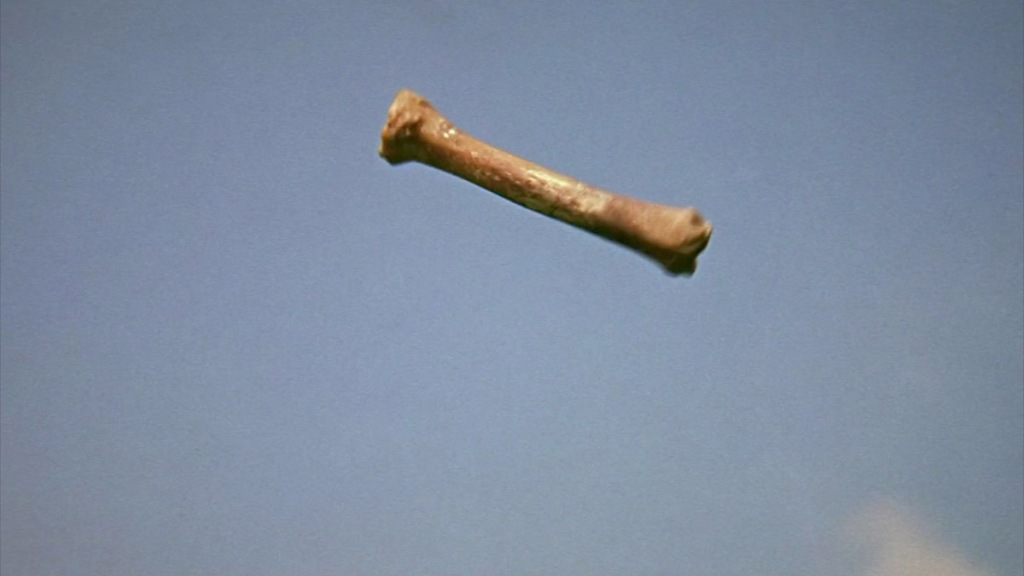 I’ve been trying to find the perfect way into a series of posts about what I’m grandly calling my ‘critical practice’. The trouble is, I’ve been reading so many different articles lately, and thinking ‘oh that fits with X, and I need to work that into this piece somehow’ I’ve managed to both comprehensively distract myself and stall myself when it comes to writing down my thoughts. It’s a known issue – I’ve been exasperating people with it for years. So, rather than striving to encapsulate Speller’s Grand Unified Theory of Something or Other in one neat, unimpeachable blog post, it seems simpler to invite readers to join me on my meandering journey to achieve a better understanding of what it is I think I’m doing when I sit down to write about science fiction and fantasy.
I’ve been trying to find the perfect way into a series of posts about what I’m grandly calling my ‘critical practice’. The trouble is, I’ve been reading so many different articles lately, and thinking ‘oh that fits with X, and I need to work that into this piece somehow’ I’ve managed to both comprehensively distract myself and stall myself when it comes to writing down my thoughts. It’s a known issue – I’ve been exasperating people with it for years. So, rather than striving to encapsulate Speller’s Grand Unified Theory of Something or Other in one neat, unimpeachable blog post, it seems simpler to invite readers to join me on my meandering journey to achieve a better understanding of what it is I think I’m doing when I sit down to write about science fiction and fantasy.

 David Olusoga’s Black and British: A Forgotten History (2016) is linked to the recent BBC series of the same name. It’s a good basic introduction to the history of black people in the UK, if you’re new to the subject: my historical interests in the last few years have been such that I already knew something about most of the pre-20th century material (and quite a lot about Granville Sharpe and Thomas Clarkson’s anti-slavery work – I recommend Adam Hochschild’s Bury These Chains, if you want to read more), though there was enough new detail to keep me interested. I was less familiar with the late nineteenth/early twentieth-century and post-war material so that took up most of my attention. The book did show some signs of being published in a hurry – there are more editorial mistakes than I thought seemly – but it does have a decent critical apparatus. It also reminded me to buy Peter Fryer’s Staying Power, which I’ve been intending to read since forever.
David Olusoga’s Black and British: A Forgotten History (2016) is linked to the recent BBC series of the same name. It’s a good basic introduction to the history of black people in the UK, if you’re new to the subject: my historical interests in the last few years have been such that I already knew something about most of the pre-20th century material (and quite a lot about Granville Sharpe and Thomas Clarkson’s anti-slavery work – I recommend Adam Hochschild’s Bury These Chains, if you want to read more), though there was enough new detail to keep me interested. I was less familiar with the late nineteenth/early twentieth-century and post-war material so that took up most of my attention. The book did show some signs of being published in a hurry – there are more editorial mistakes than I thought seemly – but it does have a decent critical apparatus. It also reminded me to buy Peter Fryer’s Staying Power, which I’ve been intending to read since forever. I’m nothing if not eclectic in my reading (actually, I’m not – it’s pretty much equal parts history, various kinds of nature writing, fiction – predominantly science fiction and fantasy, and criticism these days) so next is Oliver Rackham’s The Ash Tree (2015) one of the Little Toller Monograph series. I find these to be something of a mixed bag (Iain Sinclair’s The Black Apples of Gower was entertaining, though possibly not for any reason he intended; my favourite by far is Adam Thirlwell’s On Silbury Hill). I was eager to read this because, well, I like ash trees, but the book felt rather leaden and dully fact-heavy until, towards the end, Rackham started taking a pop at various authorities over the ash dieback crisis.
I’m nothing if not eclectic in my reading (actually, I’m not – it’s pretty much equal parts history, various kinds of nature writing, fiction – predominantly science fiction and fantasy, and criticism these days) so next is Oliver Rackham’s The Ash Tree (2015) one of the Little Toller Monograph series. I find these to be something of a mixed bag (Iain Sinclair’s The Black Apples of Gower was entertaining, though possibly not for any reason he intended; my favourite by far is Adam Thirlwell’s On Silbury Hill). I was eager to read this because, well, I like ash trees, but the book felt rather leaden and dully fact-heavy until, towards the end, Rackham started taking a pop at various authorities over the ash dieback crisis. Sarah Hall’s The Wolf Border turned out be less than I was expecting, after a promising start. I was hoping for something a bit more wolfish than I ended up with. I did not expect to get what is, to all intents and purposes, a contemporary version of the Gothic romance of the 1970s. Hated them then, really don’t like them now, even with a fresh spin. All the really interesting stuff was going on in the novel’s interstices, where we and the protagonist could only glimpse it. As a novel about national identity, it seemed have a lot to say about pregnancy. Exquisitely written, exquisitely frustrating.
Sarah Hall’s The Wolf Border turned out be less than I was expecting, after a promising start. I was hoping for something a bit more wolfish than I ended up with. I did not expect to get what is, to all intents and purposes, a contemporary version of the Gothic romance of the 1970s. Hated them then, really don’t like them now, even with a fresh spin. All the really interesting stuff was going on in the novel’s interstices, where we and the protagonist could only glimpse it. As a novel about national identity, it seemed have a lot to say about pregnancy. Exquisitely written, exquisitely frustrating.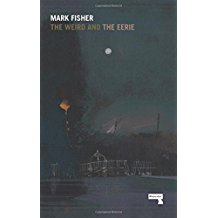 I was only dimly aware of the existence of Mark Fisher as a writer, and it took his death to draw my attention to his last book, The Weird and the Eerie, which came out last year. I’ll not say much about it now as I’m planning to reread it and write about it, but I will note that I did not expect to read a piece of work published in 2016 that was so white and so male in its critical approach. Only three texts by women were discussed, and a lot of the material discussed was old. The section on Alan Garner focused on Elidor, The Owl Service and Red Shift, as though Strandloper, Thursbitch and Boneland, all equally pertinent to the discussion, had never been written. I’m also not sure whether Fisher realised that Yvonne Rousseau’s Murder at Hanging Rock (which he discusses in the section on Picnic at Hanging Rock, bu unforgiveably does not mention in the bibliography) was intended as spoof scholarship. And yet, there was much about the basic critical thesis that I found very useful, hence much of my irritation with the text.
I was only dimly aware of the existence of Mark Fisher as a writer, and it took his death to draw my attention to his last book, The Weird and the Eerie, which came out last year. I’ll not say much about it now as I’m planning to reread it and write about it, but I will note that I did not expect to read a piece of work published in 2016 that was so white and so male in its critical approach. Only three texts by women were discussed, and a lot of the material discussed was old. The section on Alan Garner focused on Elidor, The Owl Service and Red Shift, as though Strandloper, Thursbitch and Boneland, all equally pertinent to the discussion, had never been written. I’m also not sure whether Fisher realised that Yvonne Rousseau’s Murder at Hanging Rock (which he discusses in the section on Picnic at Hanging Rock, bu unforgiveably does not mention in the bibliography) was intended as spoof scholarship. And yet, there was much about the basic critical thesis that I found very useful, hence much of my irritation with the text. Last but not least, I read Love Beyond Body, Space and Time: An indigenous LGBT Sci-Fi Anthology, edited by Hope Nicolson. I’ve a review of this coming up in Strange Horizons so I’ll link to that when it appears.
Last but not least, I read Love Beyond Body, Space and Time: An indigenous LGBT Sci-Fi Anthology, edited by Hope Nicolson. I’ve a review of this coming up in Strange Horizons so I’ll link to that when it appears. I also read (possibly reread) Ted Chiang’s Stories of Your Lives as I was going to see Arrival and wanted to read ‘Story of Your Life’. Ted Chiang is an excellent writer of a particular kind of sf that I happen to like, so job done.
I also read (possibly reread) Ted Chiang’s Stories of Your Lives as I was going to see Arrival and wanted to read ‘Story of Your Life’. Ted Chiang is an excellent writer of a particular kind of sf that I happen to like, so job done. Other rereads were Alison Uttley’s The Country Child and A Traveller in Time, and Lucy M. Boston’s The Children of Green Knowe. I’ve never much cared for A Country Child as a story, but see now that’s because it isn’t, not really. To my adult eyes, the descriptions of landscape and country ways are beautifully done; Susan Garland remains annoyingly priggish. For that kind of thing I would rather read Flora Thompson’s Lark Rise to Candleford.
Other rereads were Alison Uttley’s The Country Child and A Traveller in Time, and Lucy M. Boston’s The Children of Green Knowe. I’ve never much cared for A Country Child as a story, but see now that’s because it isn’t, not really. To my adult eyes, the descriptions of landscape and country ways are beautifully done; Susan Garland remains annoyingly priggish. For that kind of thing I would rather read Flora Thompson’s Lark Rise to Candleford.